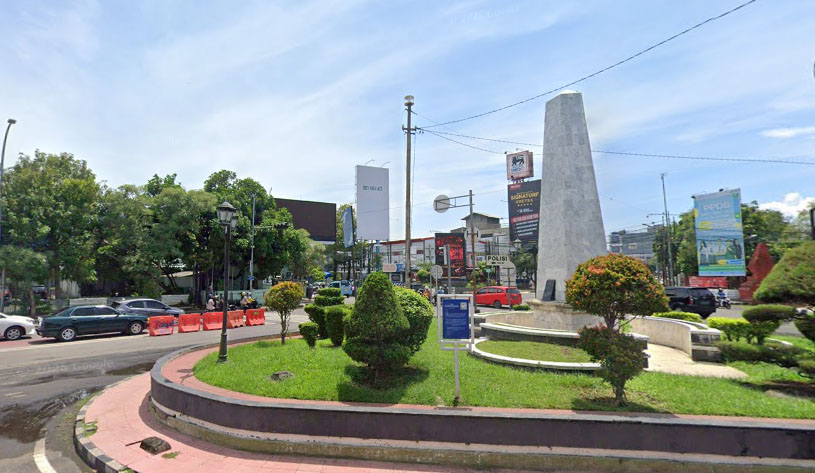As the old Sir Alex Ferguson saying goes: ‘Attack wins you games, defence wins you titles.'
He was wrong, of course, but don’t tell Mikel Arteta that. Less than half of the Premier League titles in the last 30 years have been won by the side with the most miserly backline, but nearly three-quarters by the team that’s banged in the most goals.
And if Fergie were correct, Arsenal would have clinched the title in each of the last two seasons and be on course for a hat-trick - instead of desperately trying to win their first in more than two decades.
This time, though, Arteta’s brick wall might just bring glory at last. Arsenal are top of the Premier League, six points clear.
It doesn’t matter how boring your critics say you are, or how reliant you might be on set-pieces, if you don’t concede any goals, you don’t need to score many to keeping winning games.
Mikel Arteta has built a formidable Arsenal defence that has only conceded three goals in all competitions this season
The arrival of £60million midfielder Martin Zubimendi has been key to Arsenal's miserly defence
JUST HOW GOOD IS ARSENAL’S DEFENCE?
Ridiculously good. Arteta’s side have conceded three goals across their 15 matches this season in all competitions.
They are on course to smash Chelsea’s already ridiculous Premier League record of conceding just 15 goals across the entire 2004-05 season under Jose Mourinho. There’s a long way to go, but at their current rate they would concede only 11 goals.
Before we get to the why, the remarkable numbers are worth digesting. Arsenal have faced the fewest shots in the division, and the fewest on target (just one in the last four games, by the way). Of the shots they do face, only a quarter of them find the target, also the lowest percentage in the division.
You would expect Arsenal to have conceded the fewest expected goals (xG) because of how few shots they face, but even that’s not enough. The xG they concede per shot is also the lowest in the division. In other words, even the rare chances teams do create against them aren't clear-cut ones.
Of the shots their opponents have managed to muster, only five of them have come from inside the six-yard box. Over the first 10 weeks of the league season, Arsenal have coughed up only six ‘big chances’, those that Opta define as ones a team should reasonably be expected to score. That’s half as many as any other team in the division. Manchester City have let up 15. Liverpool have allowed 28 of them.
They just stop opponents getting the ball into dangerous areas. That sounds simple but, clearly, is anything but.
Arsenal limit their opponents to speculative efforts on goal rather than clear-cut opportunities
SO, WHY IS THEIR DEFENCE SO GOOD?
Arsenal have boasted the most miserly defence in the division over the past two seasons but Arteta has found a way to make it even better. Their xG conceded per game of 0.57 is staggeringly low, better even than the 0.64 Manchester City averaged on their way to 100 points in 2017-18.
There’s a few reasons for this. Gabriel and William Saliba - who form arguably the strongest defensive partnership in world football - have another year of playing together under their belt.
The summer signings have been key, too. This column has discussed before how Viktor Gyokeres has allowed Arteta to tweak his style to give Arsenal the option of being more direct and hit teams more frequently on the break.
Because they have that option now, Arsenal are sitting deeper and pressing less than ever under Arteta. They are winning possession back in the final third just 3.7 times per game, the lowest of any season during his tenure. That makes them harder to break down.
But the arrival of £60million midfielder Martin Zubimendi has been just as key.
Arteta likes to give full backs Jurrien Timber and Riccardo Calafiori licence to push high in central areas, almost acting as strikers at times. But they have the freedom to do so because they now have both Zubimendi and Declan Rice to slot into the backline to both progress the ball from deep, but also act as cover if Arsenal lose it.
Both of the full backs alternate which one drops in and which one pushes on - as a way to confuse opponents. You can see here two examples from the weekend’s 2-0 victory over Burnley, as Rice and Zubimendi slot into the backline while Calafiori goes on his adventures.
Martin Zubimendi (circled, right) drops into defence, allowing Riccardo Calafiori (circled, left) to wander up field
Declan Rice (circled, right) does the same, again allowing full back Calafiori to join the Arsenal attack
Ask Arteta why Arsenal are so resilient and he will point to the desire of his players to stop the ball getting anywhere near their goal.
After the Burnley game, he pointed to a corner his side had won in the fourth minute of second-half stoppage time.
Arsenal were two goals up, the game was done, but still as the Clarets cleared their lines and broke away, Arteta watched on as all his players charged back into position.
By the time the ball was played towards their box, Rice, the corner taker, was there to head it clear and before you knew it Arsenal had nine players behind the ball.
As Burnley break from an Arsenal corner in the 94th minute, the Gunners players stream back
And seconds later they have their shape back and nine men behind the ball
‘I think the spirit is an action at the end,’ said Arteta when asked for the secret to conceding just a single shot on target in four games. ‘You see 10 players sprinting 80 metres. We play with that desire, with that focus, with that discipline. We'll win a lot of games.’
They certainly are.
SO, HOW CAN THEIR OPPONENTS GET A SHOT ON TARGET?
It’s tough, clearly, but not impossible.
Let’s take the three goals Arsenal have conceded in the league this season and see what, if anything, can be gleaned.
The first was a Dominik Szoboszlai free-kick from more than 30 yards away. His winner in Arsenal’s only defeat of the season came from an effort with an xG of 0.03, so a three per cent chance of going in. Not much you can do other than pick the ball up, boot it back towards the centre circle and doff your cap.
Nick Woltemade’s goal for Newcastle was a fine header from a well-worked short corner. Even that was a bit of a freak goal, coming against the best set-piece team in the division and a side that’s conceded the second-lowest xG from dead-ball situations, behind only Newcastle.
Moral of that story: be better at set-pieces than the set-piece kings.
The cover that the tireless Rice gives his team has been vital to Arsenal's solidity at the back
The one goal that gives the best idea of how to find a way through Arsenal’s seemingly impenetrable defence is Erling Haaland’s in the draw against Manchester City, when the striker broke clear and finished off a blistering counter-attack.
Yes, Arsenal are sitting deeper than usual and, yes, they have world-class players to cover danger and, yes, they will all bust a gut for the cause BUT if they are susceptible anywhere, it is on the break.
The Gunners have conceded the second-most attempts on goal from fast breaks in the division. Only Newcastle have been hit by more of them or face more shots from them.
Manchester United mustered seven shots on target in their opening-day defeat by Arsenal at Old Trafford, more than double any other side have managed, and they frequently looked to hit the ball quickly into space.
Manchester United attempt to play quickly through Arsenal in the first game of the season
Their tactic was a partial success as they managed seven shots on target - although they still lost 1-0 to the Gunners
But you can’t just hit Arsenal on the counter and hope for the best. They are too well-drilled for that. What many successful efforts had in common, including Haaland’s goal, was opponents winning second or third balls and causing chaos after Arsenal’s defenders had stepped out to make a clearance.
In this example, Ben White steps out to win the ball. However, United pounce on the loose ball and by the time it falls to Bruno Fernandes, White is out of position and there’s space to attack. Patrick Dorgu breaks clear and hits the post.
Ben White steps out of defence with the ball for Arsenal against Manchester United on the opening weekend of the season
But Arsenal lose the ball and it falls to United's Bruno Fernandes (circled)
With White (circled) out of position, Fernandes releases Patrick Dorgu, who is in acres of space on United's left. He goes on to the hit the post, giving Arsenal a rare scare
When Haaland strikes for City, the opportunity arises because he manages to play a one-two with Tijjani Reijnders despite being surrounded by Arsenal shirts.
Ironically, it’s only because they swarmed him that he can break away.
Erling Haaland manages to squeeze the ball out of a swarm of Arsenal defenders at the Emirates earlier in the season
Tijjani Reijnders breaks away before playing Haaland in on goal and the City man finds the net
If you look at the map of where Arsenal have conceded their chances (below), the passes that led to an attempt on goal, many of them come from inside the opponent’s half.
It’s also no surprise that the majority come from down their right-hand side, in behind the space left by the marauding full backs.
Passes that have led to an attempt on Arsenal's goal this season. The blue dots signify the passes that led to a goal
If you are to muster a shot on target against Arsenal, that’s where it’s likely to come from. But be prepared for the flock of red shirts to be back in position by the time you try to pull the trigger.
Newcastle thought they had exploited the space in the first half of their defeat by Arsenal. The Gunners lost the ball in midfield and the Magpies set Woltemade free. But by the time he gave it to Gordon, the cavalry was back and Rice won it back.
Jurrien Timber loses the ball in midfield for Arsenal against Newcastle this season
Newcastle work the ball quickly forward for Woltemade to attack the Arsenal goal with numbers up
But the Gunners are so quick to get back that the threat from Anthony Gordon is snuffed out by Rice
And, look, even if you do get your shot away, you still have to beat the goalkeeper with the best save percentage in the division in David Raya.
So, yeah, good luck.

 3 weeks ago
39
3 weeks ago
39

















































